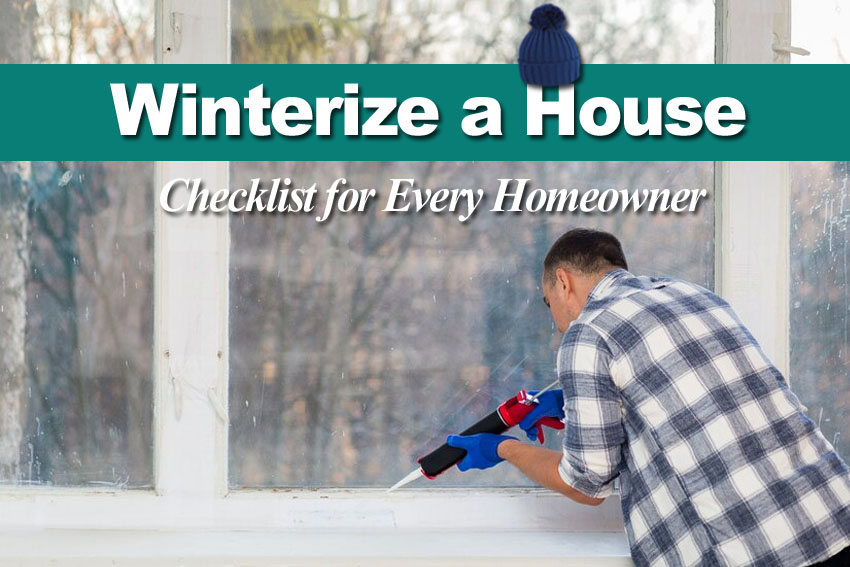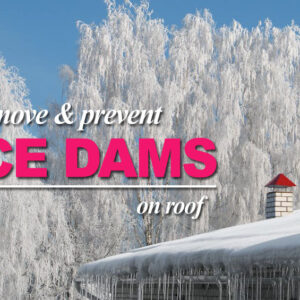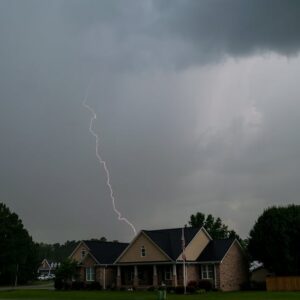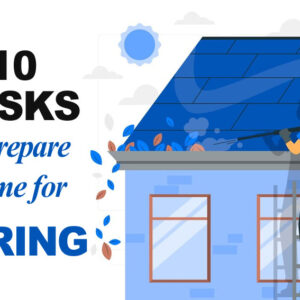As the colder months approach, it’s essential for homeowners to prepare their houses for winter to ensure comfort, safety, and energy efficiency. Winterizing your home involves a series of steps to protect against cold temperatures, prevent damage, and reduce energy costs. This comprehensive guide provides a detailed checklist to help homeowners effectively winterize their homes and navigate the challenges of the winter season.
Let’s Start Winterizing a House Checklist
1. Inspect and Seal Windows and Doors:
- Look for any cold air coming in around your windows and doors.
- Fill in any holes or spaces with special tape or a thick liquid to keep the cold air out.
- Consider adding storm windows or installing plastic window film for extra insulation.
- Make sure to look for and block any holes or gaps near pipes, vents, or electrical outlets.
2. Insulate Attic and Walls:
- Make sure your attic has enough material to keep heat from escaping.
- Insulate exterior walls and crawl spaces to keep cold air out and warm air in.
- Consider adding insulation to basement walls and floors to further improve energy efficiency.
3. Service Heating System:
- Book a professional to check and fix your heating system.
- Replace air filters to improve indoor air quality and ensure efficient operation.
- Consider installing a programmable thermostat to regulate temperatures and save on energy costs.
4. Protect Pipes:
- Add insulation to pipes that you can see to stop them from getting too cold and breaking.
- Empty and turn off outdoor faucets and watering systems.
- Consider installing heat tape or cable for added protection in vulnerable areas.
- For other plumbing issue use our guide Plumbing safety tips for homeowners
5. Clean Gutters and Downspouts:
- Remove leaves, debris, and any obstructions from gutters and downspouts.
- Ensure that water can flow freely to prevent ice dams and water damage.
- Consider installing gutter guards to reduce maintenance and prevent clogs.
6. Prepare Fireplace and Chimney:
- Schedule a professional chimney cleaning and inspection.
- Stock up on firewood and store it in a dry, covered area.
- Consider installing a chimney cap to prevent pests and debris from entering.
7. Check Smoke and Carbon Monoxide Detectors:
- Check your smoke and carbon monoxide detectors and put in new batteries if they’re old.
- Make sure there are smoke and carbon monoxide detectors on each floor and close to where people sleep.
- Consider upgrading to interconnected detectors for added safety and peace of mind.
8. Seal Exterior Gaps and Cracks:
- Look at the outside of your house to see if there are any holes or openings.
- Seal gaps around siding, foundation, and utility penetrations with caulk or foam insulation.
- Repair any damaged siding or roofing to prevent moisture infiltration and heat loss.
9. Protect Outdoor Equipment:
- Store outdoor furniture, grills, and garden tools in a dry, covered area.
- Drain and winterize outdoor hoses and irrigation systems.
- Consider covering outdoor air conditioning units to protect them from snow and ice.
10. Prepare Emergency Kit:
- Assemble a winter emergency kit with essentials such as blankets, flashlights, batteries, non-perishable food, and water.
- Include a supply of medications, first aid supplies, and important documents.
- Keep a list of emergency contacts and local resources handy in case of power outages or severe weather.
Conclusion to Winterize a House
By following this comprehensive checklist, homeowners can effectively winterize their homes and prepare for the challenges of the colder months. Taking proactive steps to insulate, seal, and protect your home can help improve comfort, reduce energy costs, and prevent costly damage. Winterizing your home is an investment in safety, efficiency, and peace of mind that will pay off throughout the winter season and beyond.




